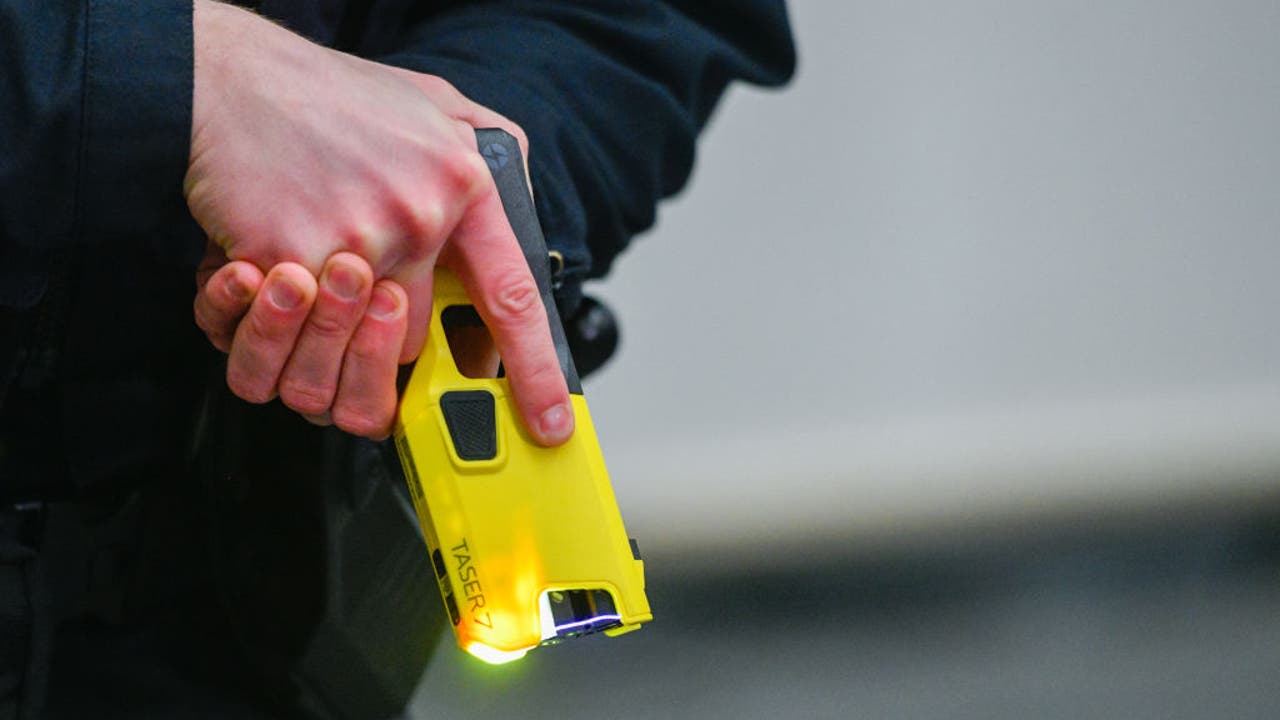SAN JOSE, Calif. – Deputies with the Santa Clara County Sheriff’s Office are reporting minimal Taser usage in jails — arguing they’ve helped curb violent incidents. But watchdogs aren’t convinced amid a push to arm the whole custody bureau.
Deputies used Tasers just nine times out of 252 incidents where correctional officers needed to use weapons or brute force on incarcerated people, according to a report from Sheriff Bob Jonsen’s office.
The department is in the midst of a Taser pilot phase — the results of which could decide whether to arm a swath of more deputies. Correctional officers fired Tasers at people seven times in the Main Jail and two times in Elmwood Correctional Facility, according to the report. Over that same time period, deputies brandished or displayed their Tasers 60 times.
At a Tuesday Community Correction and Law Enforcement Monitoring Committee meeting, sheriff officials argued Tasers effectively deescalated 56% of the incidents they were involved in — and say the low rate of firing is a reflection of sound judgment. They argue Tasers fueled a 4% decrease in injuries among people in jail after fights since last year, though the data shows hospitalizations remained the same.
“It definitely has been very helpful in maintaining the number of assaults occurring in the facility — and at the very least, stopping the assaults before they continue,” Undersheriff Dalia Rodriguez said at the civilian oversight meeting. “As we move on with the program the hope is we can reduce the number of assaults, particularly with the inmate versus inmate population.”
The report comes six months after the Board of Supervisors authorized use of the weapons despite concerns from civil rights advocates about potential fatalities.
Sheriff officials weren’t able to answer certain questions on the spot. Namely: Why oversight monitors could not access body-worn camera footage of interviews with Taser victims.
The issue came up after the oversight firm OIR group found jail supervisors documenting these interviews — meant to gauge whether the incident was by the book — in vague written reports with few or no details. OIR Group found jail supervisors primarily relied on deputies’ body-worn cameras recording the interviews.
“Unfortunately, when we asked to review video recordings of interviews, we learned that not all recordings had been tagged to the incidents and saved as part of the overall case files,” OIR Group wrote in a report reviewing the Taser incidents that occurred so far. Oversight monitors could only review one such interview as a result and found it lacking in thoroughness and detail.
Nobody in the room could answer why the sheriff’s office didn’t comply.
OIR Group representatives have since said the sheriff issued written directives to try and rectify these flaws. Still, the report alarmed one of the civilian board’s most vocal Taser critics.
“Sheriff Jonsen, you promised full transparency when the Board of Supervisors approved this two-year pilot project,” Walter Wilson, a committee member and CEO of the Silicon Valley Minority Business Consortium, said at the meeting. “The sheriff promised this would be available to the public … I would really appreciate the sheriff keeping his word.”
Richard Konda is executive director of the Asian Law Alliance, which is part of a network of civil rights groups known as the Coalition for Justice and Accountability. The group has pressed for transparency around the Taser deployments.
At the meeting, Konda warned Tasers have a history of being fatal and abused by law enforcement. He also pointed out the manufacturer of the county’s Tasers, Axon Enterprises, shifts liability from the company to the local governments using them. He said that would leave taxpayers on the hook for lawsuit payouts while Santa Clara County faces a massive budget deficit.
“How can we afford to play that kind of Russian Roulette?” Konda said.
Jonsen’s office said the Taser pilot program has so far avoided the use of taxpayer dollars — instead relying on revenues from possessions seized by law enforcement in relation to criminal investigations.
“We’re still finalizing a full cost estimate for expanding the program,” Brooks Jarosz, spokesperson for the sheriff’s office, told San José Spotlight.
Jarosz said sheriff officials won’t expand the program without proper community feedback.
“While we’re ready to move forward, we won’t do so without (county supervisors’) approval and a strong foundation of training and oversight,” he said.
Contact Brandon Pho at brandon@sanjosespotlight.com or @brandonphooo on X.

